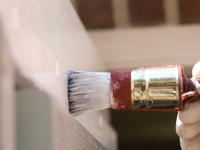
First announced as part of the Tomorrows Schools reforms in 1988 by David Lange, the plans were launched to ensure that the newly introduced Boards of Trustees were taking “a long-term systematic approach” to school maintenance and capital works planning.
If carried out correctly, property planning can help the board look after its school property well and compete with other schools in the area. However, for those about to renew their property plans it is important to note that there is a great deal more input required this time round.
Since the revised Property Management Handbook was issued in 2007 there have been a number of additional clarifications, requirements, tools and templates created that have to be completed before the plan can be submitted to the Board of Trustees and the Ministry of Education.
There are several stages to developing a plan and it can take some time to get through the full process. For more information Section 4 of the PM Handbook contains a simple flowchart of the process to get you underway or you can contact your school property advisor (SPA) – the new name for network facilitators – or consult an experienced school project manager for advice. Boards can help themselves by ensuring that property has been considered, and included, in the most recent version of the school charter for the year.
Part of the property plan template requires a direct reference of each capital works project to a clear objective within the latest school charter. These charters usually have clear objectives and goals in the areas of curriculum and professional development, but many lack any evidence of forward planning with the school property assets.
The Ministry is currently reviewing how information for the property plan is derived with the development of the NZ Schools Condition Survey Policy, with its key intention to include more input from school personnel. This makes sense in a long-term systematic approach to school property maintenance by including the principal and the caretaking and even teaching staff to identify and report on issues around the property.
One primary school recently involved both children and teachers to identify faults as well as using their property wish list as a teaching exercise. If this became a regular practice, maintenance would become more of a community discipline and the collation of a condition survey would be a very efficient process.
Another facet of the condition survey the Ministry is now enforcing is the inclusion of reports from qualified specialists in particular trades, for example electrical, plumbing and drain laying, boilers, roofing and even field drainage. This is usually an additional expense; however, this can be reduced if the school has regular tradesmen that know the school well.
A new tool introduced for the 2010/11 year is the Modern Learning Environments (MLE) template. This is designed to help boards achieve the Ministry’s new priorities of health and safety, essential infrastructure and a 10-year target to create a satisfactory level of Modern Learning Environments in schools.
It has been recognised that a great number of our classroom stock does not achieve the Ministry’s own design guidelines in reference to light, insulation, air quality and modern teaching technique functionality.
The initial feedback from schools to the MLE has been very positive – however, some schools struggle with the purpose and intent of some of the questions, and feel some of the terminology is aimed more at property professionals. Anyone attempting to complete this tool should download the Excel spreadsheet as it includes a complete worksheet with in-depth instructions. If there is any doubt consult with your school project manager for guidance.
One of the last requirements for the property plan is a revised Cyclical Maintenance Provision template, which assists in estimating the future cost for regular costly maintenance such as painting that must be done every seven to 10 years. The template calculates the yearly allowance that must be put aside from the school’s property maintenance grant. The figures need to be as accurate as possible as it can have a substantial effect on available maintenance expenditure and on the end-of-year accounts.
In fact, to complete the10-year property plan several figures now need to be inserted from audited end-of-year accounts.
As you can see, the process now has many more inputs from many different people and resources. However, if a board starts early in the year there is little reason why the plan could not be submitted and approved before June 30, allowing the school to access and benefit from funding sooner rather than later.
Educators and politicians are trying to address the current teaching shortage through different policy settings.…
Melanie Webber was the president of the secondary school union PPTA Te Wehengarua from 2021…
Wait times for paediatric care is having an impact on young people’s education and the…
Home of the brave, land of the free… except when it comes to books for…
Could a gender achievement gap in maths be due to confidence? Sarah Buckley from the…
The much-delayed English draft curriculum is now out for consultation, generating discussion from teachers.
This website uses cookies.